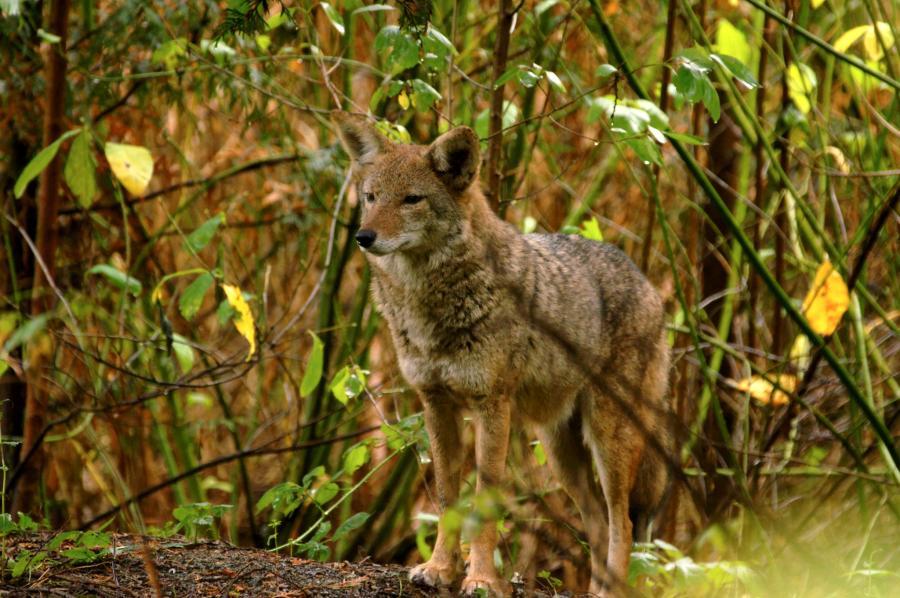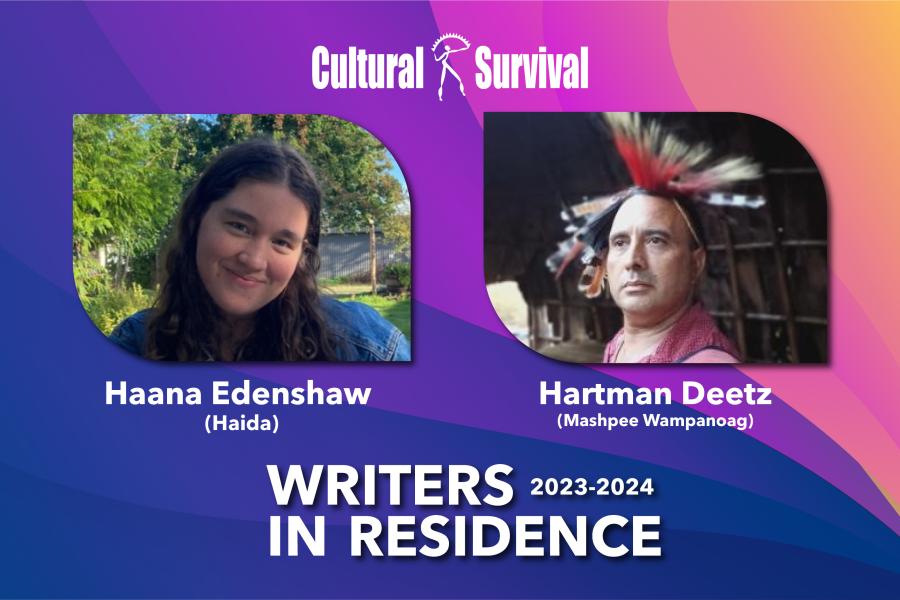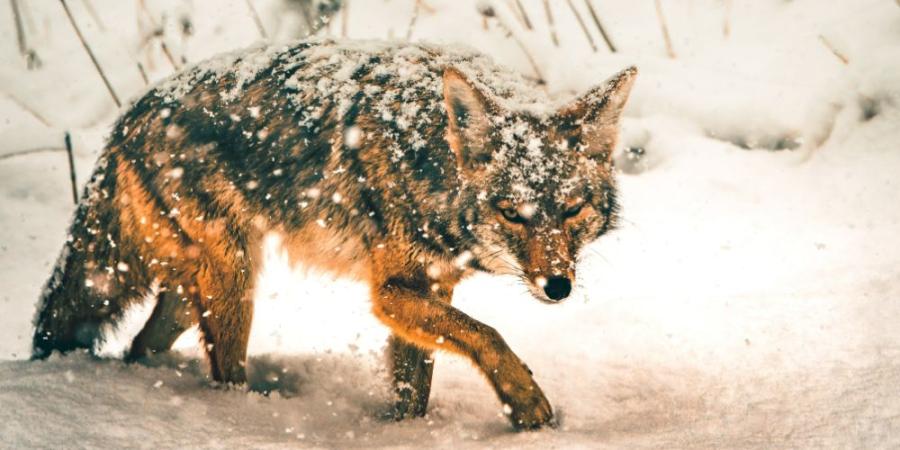One of the poorest—and poorest performing—schools in Alabama has become the top school in the state and is now a model for schools all over the country, all because it introduced students to their own identity.
Calcedeaver Elementary School has every reason to be an abject failure. Located in the sandy, rolling forestlands north of Mobile, Alabama, it’s in a rural area with very few resources. It sits on the edge of the MOWA Choctaw reservation, and most of its students are Choctaw. Like too many Indian reservations, the Choctaws’ is very poor: per capita income hovers around $2,800 a year, and 92 percent of the students qualify for free or reduced lunch—usually a harbinger of academic trouble. In 2001, that’s just where Calcedeaver found itself: 68 percent of the school’s students dropped out before they finished high school, and even those who did graduate found little work available for them—but plenty of alcohol and drugs to go with their poverty. The state didn’t do much to alleviate this situation, either. Many of the grants and special programs that went to wealthier schools never made it out to Calcedeaver. The school’s grounds were overgrown, its buildings dilapidated, and its dedicated teachers were fighting an uphill battle against poverty, despair, and neglect.
But that was 2001. Today, the social and economic challenges are still there, but everything else has changed dramatically. The school’s grounds are tidy, the buildings up to date, the children happy and motivated. The vast majority of students are at or above expectations for their grade level. Ninety-three percent of them now graduate high school, and last year the school ranked number one in the state, beating out top contenders from wealthy suburban communities. Now families from other communities apply to have their children transferred to Calcedeaver. The school was named a No Child Left Behind Blue Ribbon School, and the Alabama governor visited recently to celebrate the school’s achievement, as did a representative of the White House. And all of this, say school administrators, is due to one thing: six years ago Calcedeaver introduced a Choctaw language and culture program.
The program was the idea of LaGaylis Harbuck, a math teacher in Mobile who was hired as the principal of the school in 2001. In several ways she was born for this role. She is herself MOWA Choctaw, and her father, Gallasneed Weaver, was an elementary and high school principal for many years and is also a preacher. Her mother, Laretta Weaver, is an enrolled citizen of the Cherokee Nation of Oklahoma who has lived in the MOWA Choctaw community since she was in her early 20s, and she is a tireless advocate for the culture and language. (Laretta and Gallasneed met while attending Bacone College in Muskogee.) Harbuck’s temperament, too, made her ideal for the job, combining the most useful qualities of Andy Griffith and Attila the Hun.
She has a droll sense of humor and a disarming down-home demeanor, as ready to make fun of herself as to skewer a pompous official. She also has a deep affection for her students. When she took me to visit the school in April, she hadn’t been there in a year—because of her success at Calcedeaver, the state promoted her last year to an administrative position in Mobile that put her in charge of 32 schools. Almost every student, and all of the teachers, greeted her with cries of delight and long hugs. And she was just as passionate. She had a personal question or gentle joke for everyone, asking after family members or remembering some special interest.
That caring for her students has a dark side, however. There is a long line of bruised bureaucrats who made the mistake of telling her that she couldn’t do something that she knew would benefit the school. She is utterly fearless, perfectly willing to barge into the governor’s office and shake him by the ear if he is resisting some academic improvement. Listening to her rail against lead-footed administrators and a hidebound system, I couldn’t help thinking that she could clean up Baghdad all by herself—within a month she would have Sunnis and Shias lined up in orderly rows, holding hands and meekly saying, “Yes, Mrs. Harbuck.”
The Choctaw program at Calcedeaver is run by Nicole Williams, a young woman who studied with Laretta Weaver and other community members and is herself gaining fluency in the language. The program has two aspects: language study and culture instruction. The culture instruction includes dance classes, lessons in traditional dress and crafts, and history and heritage teaching. On the day I visited, the children were learning a traditional circle dance called Stealing Partners, in which boys and girls indicate the person they would most like to dance with and pull them out of line. The students compete in powwows several times a year. One of the most impressive outcomes of the program is a Choctaw culture exhibit, a small village of 12 traditional Indian houses from various tribal nations on one side of the school grounds. There are structures made of bark, thatch, saplings, and earth, with a footpath winding among them. Tellingly, the buildings show no sign of abuse, no graffiti, no empty soda cans, none of the things you would expect to see in an urban or suburban setting. Schools from other states now come to Calcedeaver to tour the exhibit, just as teachers and school officials come to learn how Calcedeaver turned itself around academically.
The language classes last 30 minutes each day, mostly concentrating on basic nouns and verbs. The school also tries to spread the knowledge beyond its four walls: “We had the kids make a Power Point CD,” Harbuck says, “with the word, the pronunciation, the English word, and their own voice speaking it. They take that home and older kids can learn.”
The school day begins with principal Aimee Rainey greeting the students over the school’s PA system and giving the day’s news. Then she turns it over to the school’s two Choctaw princesses, who recite a greeting in Choctaw. The day I was there the girls and the senior administrators also sang “Chim Afammi Nittak” (“Happy Birthday” in Choctaw) for one of the school’s students. Everyone acknowledges that 30 minutes of daily language instruction will not create fluency. But even this limited focus on language has created a sense of identity and pride that has enormous repercussions.
“When I arrived,” Harbuck says, “there was an Indian education program in place, but it mostly consisted of buying books on culture. When I first started, I asked the kids if they knew who they were. Not one hand went up—we, as one of the Five Civilized Tribes, assimilated all too well. Finally, one boy put his hand up and said, ‘I’m Cajun.’ I told him, ‘No, you’re not. You’re Choctaw.’ These kids didn’t even know who they were.” (It should be noted that this is not a universal circumstance among the MOWA Choctaws; some families, like LaGaylis’, have a strong sense of their heritage.)
This lack of identity is hardly surprising, given the history of the tribe. In 1830, when most of the Choctaw Nation was forced west by the Indian Removal Act, a small number of tribe members chose to escape and hide in the relatively remote pine woods around Mount Vernon and McIntosh. Because their territory straddled the Alabama counties of Mobile and Washington, they dubbed themselves the MOWA Band of Choctaw Indians and remained voluntarily isolated and relatively undisturbed for several decades. They centered around an elevated ridge called Nanih Chaha, or High Hill, which is about 15 miles north of the reservation. Nanih Chaha was heavily forested, providing plenty of game, and had a good water source at its base. Until the early 1900s it was the home for most of the tribe, but the same attributes that made it attractive to them made it attractive to whites, who began to acquire the land through a variety of unscrupulous methods. Today, the entire hill is owned by whites, and Choctaws who go there can be arrested for trespassing. Todd Johnston, a tribe member who took me on a surreptitious tour of the hill, pointed out one section and told me how it was in dispute because the white claim to it was based on a form signed with an X by his grandfather. “The thing is,” Johnston said, “my grandfather was entirely literate. Why would a man who could read and write sign his name with an X?”
Despite the MOWA Choctaws’ long history in this area, the federal government has refused to recognize them as a tribe. This is partly due to the Dawes Act, which required Indians to give up their collective identity, language, and religion and take up individual land ownership. Thus broken up, it became much harder to maintain tribal identity—or at least harder to prove the continuity of that identity to the government. The MOWA Choctaws have been fighting for federal recognition since they first made application to the Guion Miller roll in 1909, with no success, despite thorough and compelling evidence. After the most recent round of appeals, the tribe’s chief, Wilford Longhair Taylor, went to Washington to retrieve the several boxes of material they had submitted. When he got there, he found the boxes still sealed: the government hadn’t even looked at the evidence, but still felt justified in denying the tribe’s application. “I was at an event,” Taylor says, “and I met the secretary who turned us down. When I told him who I was, he said, ‘I denied you?’ He didn’t ever even read our file.” It turns out that the denial was tied to two neighboring tribes that had been lobbying against MOWA recognition—through the now-incarcerated Jack Abramoff—because they feared competition for their gaming income.
The state of Alabama did recognize the tribe in the 1980s, and 300 acres of the MOWA Choctaws’ original lands were officially designated as a state Indian reservation, including their traditional stomping ground, where they now hold an annual powwow. The reservation includes a large and modern headquarters building, an athletic center, a stickball field, baseball field, and football field, and housing complexes financed through Federal Indian Housing allocations. It also has a small museum that once housed Geronimo when he was a prisoner of the government. All of the signs in the tribal headquarters now have an accompanying piece of paper with the equivalent Choctaw word printed on it—a byproduct of Calcedeaver’s success.
Partly because the MOWA Choctaws remained isolated and partly because most people in Alabama thought that all the Choctaws had been forced to Oklahoma on the Trail of Tears, there was simply no awareness that they existed. In the race-conscious South, everyone was defined as either black or white, and there was no place in the general consciousness for Indians. “Cajun” was a catchall term for anyone who didn’t fit precisely into the other two categories, including Choctaws—thus the boy’s self-identification in class. “The forms for school would say ‘white,’ ‘black,’ and ‘other,’” Harbuck explains. “You couldn’t even identify as native. So the light-skinned kids would identify as Cajun. We made the government change all their forms, so now our kids can say who they are.” (When Harbuck says “we made the government change their forms,” her voice takes on an intensity that makes clear how little choice she gave the state officials.)
The discrimination continues today, in myriad small ways. Nicole Williams tells how Harbuck’s sister, Heather Snow, experienced this in school. “Heather was valedictorian of her high school class,” Nicole says, “and there were two salutatorians. One, who was white, got $100,000 in scholarship offers, because the guidance counselor worked with her. Heather got none.”
This history of dissolution and denial is the cultural backdrop for Calcedeaver’s students, and explains why their sense of identity is so powerful. “If they’re proud of who they are,” says Laretta Weaver, the fountainhead of the language program, “they can go anywhere. We’ve proved it over the past five years.” For LaGaylis Harbuck, making the program work meant hiring the right people. “You want your children to have the best role models,” she says. “It used to be that the only role models the kids had were bus drivers and cooks.”
Nicole Williams was the first one she turned to. Williams is a young woman who, like Harbuck, knows what she is about and has an intense passion for her culture. Her main base of operations is a gray, raised, trailer-like structure next to the ball field, one of the two temporary buildings on the school’s campus that have never been replaced and are now considered permanent. Inside, along one wall, is a whiteboard, covered, on the day I was there, with the words of the chant that accompanies the Stealing Partners dance. Next to the whiteboard there are cards with Choctaw words for numbers, colors, and other basic terms. Work tables occupy the other end of the room, with dance regalia in various states of construction. There are jingle dresses, which are covered with long metal cones, and standard multicolored powwow gear (the MOWA Choctaws have borrowed much of the Western tribes’ materials for powwows), as well as traditional Choctaw dress. There’s also a rack on which students are learning how to do beadwork. Presiding over all of this is Nicole Williams. “I had a physical therapy degree,” she says, “and I was on track to be a physical therapist or a doctor. But LaGaylis came along and said, ‘Oh, no. You’re going to be a teacher.’ I didn’t want to do that, but then she said, ‘I want you to teach Indian education,’ and I said ‘Hmm . . .’”
Heather Snow, who is the school librarian, is another crucial component of the program. She has turned the library into an active learning center about Choctaw history and culture, using technology and innovative techniques for teaching the children how to do research. Both Snow and Williams grew up in homes where their parents strongly reinforced their tribal identity. “Our Mama said, ‘You can never say anyone is prejudiced; you can never let the color of your skin be an excuse,’” says Nicole. According to Brent Orso, the school’s coach, their background provides a good example of the power of the program. “If you look at what Nicole and Heather have done, growing up with cultural pride,” he says, “imagine what will happen 10 years from now when these kids are having kids—this whole community will open like a flower.”
To insure the program’s success, Harbuck got everyone in the school involved. Even the janitor was pressed into service as a reading teacher. And she extended the program to the regional middle school and high school to ensure some continuity. “The middle school and high school weren’t receptive at first,” Harbuck says, “until they saw the test scores. Now they have an Indian social club.” The program is also conducted at Boykin Elementary School in McIntosh, on the other side of the reservation. There the children not only get instruction in class, but they also have the option of an after-school language program.
Harbuck may not be at Calcedeaver anymore, but she still has plans for using language to bolster community. “I want to set up an immersion school,” she says. “I want to take the best from magnet schools and all the other school types. I talked to the governor about it, and he didn’t say no—he didn’t say yes, but he didn’t say no.”
It’s important to note that Calcedeaver’s turnaround had many contributing elements, including cutting-edge reading and science programs. And, of course, there is the Harbuck factor—her take-no-prisoners approach would make a difference anywhere (and it extends to the students: she made it clear that she expected their best and would accept no excuses). But everyone at the school, from current principal Aimee Rainey on down, is adamant that the effectiveness of the other programs rests entirely on the language and culture program. “No matter who you are,” says Nicole Williams, “no matter what your socioeconomic situation, you can succeed if you know who you are.”
Mark Cherrington is the editor of Cultural Survival Quarterly.



